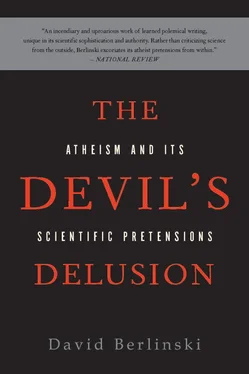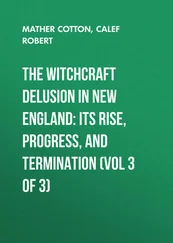Nonetheless, there is this awkward fact: The twentieth century was not an age of faith, and it was awful. Lenin, Stalin, Hitler, Mao, and Pol Pot will never be counted among the religious leaders of mankind.
Nor can anyone argue that the horrors of the twentieth century were unanticipated. Although they came as a shock, they did not come as a surprise. In The Brothers Karamazov, Ivan Karamazov exclaims that if God does not exist, then everything is permitted. Throughout the nineteenth century, as religious conviction seeped out of the institutions of Western culture, poets and philosophers had the uneasy feeling that its withdrawal might signal the ascension of great evil in the world.
In this they were right.
What gives Karamazov’s warning—for that is what it is—its power is just that it has become part of a most up-to-date hypothetical syllogism:
The first premise:
If God does not exist, then everything is permitted.
And the second:
If science is true, then God does not exist.
The conclusion:
If science is true, then everything is permitted.
Whereupon there is a return to a much older, vastly more somber vision of life and its constraints, one that serves to endow the phrase bestial indulgence with something more by way of content than popularly imagined.
In 2007, a number of scientists gathered in a conference entitled “Beyond Belief: Science, Religion, Reason, and Survival” in order to attack religious thought and congratulate one another on their fearlessness in so doing. The physicist Steven Weinberg delivered an address. As one of the authors of the theory of electroweak unification, the work for which he was awarded a Nobel Prize, he is a figure of great stature. “Religion,” he affirmed, “is an insult to human dignity. With or without it you would have good people doing good things and evil people doing evil things. But for good people to do evil things, that takes religion” (italics added).
In speaking thus, Weinberg was warmly applauded, not one member of his audience asking the question one might have thought pertinent: Just who has imposed on the suffering human race poison gas, barbed wire, high explosives, experiments in eugenics, the formula for Zyklon B, heavy artillery, pseudo-scientific justifications for mass murder, cluster bombs, attack submarines, napalm, intercontinental ballistic missiles, military space platforms, and nuclear weapons?
If memory serves, it was not the Vatican.
If the facts about the twentieth century are an inconvenience for scientific atheism, suitably informed thought may always find a way to deny them. The psychologist Steven Pinker has thus introduced into the discussion the remarkable claim that “something in modernity and its cultural institutions has made us nobler.”
The good news is unrelenting: “On the scale of decades, comprehensive data again paint a shockingly happy picture.”
“Some of the evidence,” Pinker goes on to say, “has been under our nose all along. Conventional history has long shown that, in many ways, we have been getting kinder and gentler.
Cruelty as entertainment, human sacrifice to indulge superstition, slavery as a labor-saving device, conquest as the mission statement of government, genocide as a means of acquiring real estate, torture and mutilation as routine punishment, the death penalty for misdemeanors and differences of opinion, assassination as the mechanism of political succession, rape as the spoils of war, pogroms as outlets for frustration, homicide as the major form of conflict resolution—all were unexceptionable features of life for most of human history. But, today, they are rare to nonexistent in the West, far less common elsewhere than they used to be, concealed when they do occur, and widely condemned when they are brought to light.
Here is rather a more accurate assessment of the twentieth and early twenty-first centuries. Anyone persuaded that they represent a “shockingly happy picture” should make the modest imaginative effort to discern the immense weight of human misery conveyed by these statistics:
A Shockingly Happy Picture by Excess Deaths
First World War (1914–18): 15 million
Russian Civil War (1917–22): 9 million
Soviet Union, Stalin’s regime (1924–53): 20 million
Second World War (1937–45): 55 million
Chinese Civil War (1945–49): 2.5 million
People’s Republic of China, Mao Zedong’s regime (1949–75): 40 million
Tibet (1950 et seq.): 600,000
Congo Free State (1886–1908): 8 million
Mexico (1910–20): 1 million
Turkish massacres of Armenians (1915–23): 1.5 million
China (1917–28): 800,000
China, Nationalist era (1928–37): 3.1 million
Korean War (1950–53): 2.8 million
North Korea (1948 et seq.): 2 million
Rwanda and Burundi (1959–95): 1.35 million
Second Indochina War (1960–75): 3.5 million
Ethiopia (1962–92): 400,000
Nigeria (1966–70): 1 million
Bangladesh (1971): 1.25 million
Cambodia, Khmer Rouge (1975–78): 1.65 million
Mozambique (1975–92): 1 million
Afghanistan (1979–2001): 1.8 million
Iran–Iraq War (1980–88): 1 million
Sudan (1983 et seq.): 1.9 million
Kinshasa, Congo (1998 et seq.): 3.8 million
Philippines Insurgency (1899–1902): 220,000
Brazil (1900 et seq.): 500,000
Amazonia (1900–1912): 250,000
Portuguese colonies (1900–1925): 325,000
French colonies (1900–1940): 200,000
Japanese War (1904–5): 130,000
German East Africa (1905–7): 175,000
Libya (1911–31): 125,000
Balkan Wars (1912–13): 140,000
Greco–Turkish War (1919–22): 250,000
Spanish Civil War (1936–39): 365,000
Franco Regime (1939–75): 100,000
Abyssinian Conquest (1935–41): 400,000
Finnish War (1939–40): 150,000
Greek Civil War (1943–49): 158,000
Yugoslavia, Tito’s regime (1944–80): 200,000
First Indochina War (1945–54): 400,000
Colombia (1946–58): 200,000
India (1947): 500,000
Romania (1948–89): 150,000
Burma/Myanmar (1948 et seq.): 130,000
Algeria (1954–62): 537,000
Sudan (1955–72): 500,000
Guatemala (1960–96): 200,000
Indonesia (1965–66): 400,000
Uganda, Idi Amin’s regime (1972–79): 300,000
Vietnam, postwar Communist regime (1975 et seq.): 430,000
Angola (1975–2002): 550,000
East Timor, conquest by Indonesia (1975–99): 200,000
Lebanon (1975–90): 150,000
Cambodian Civil War (1978–91): 225,000
Читать дальше













